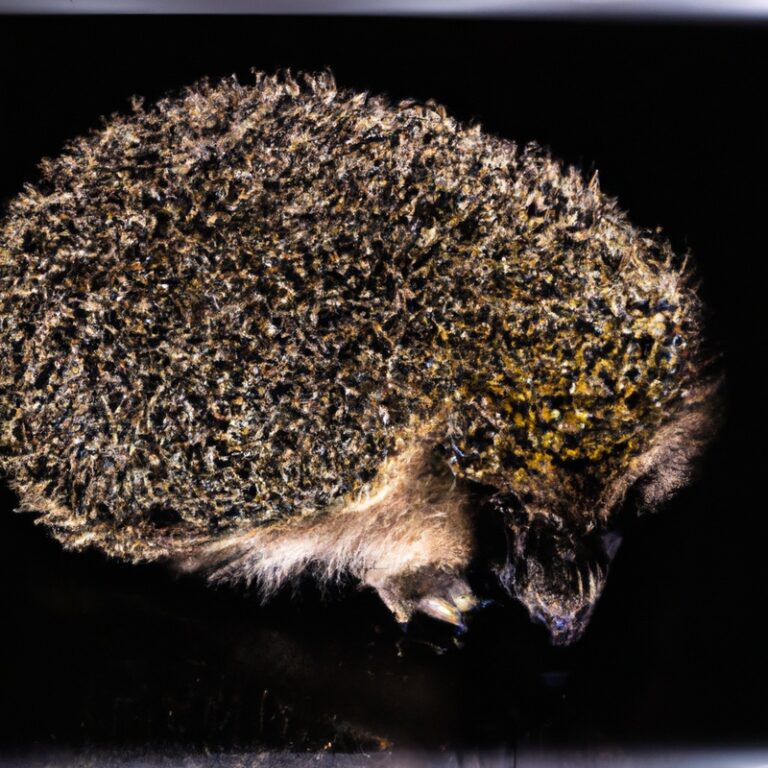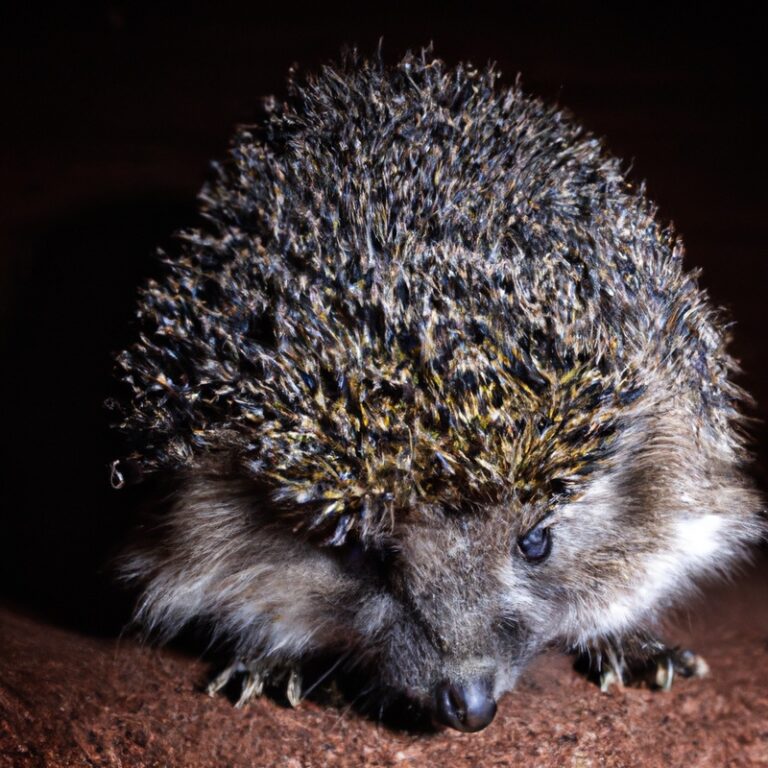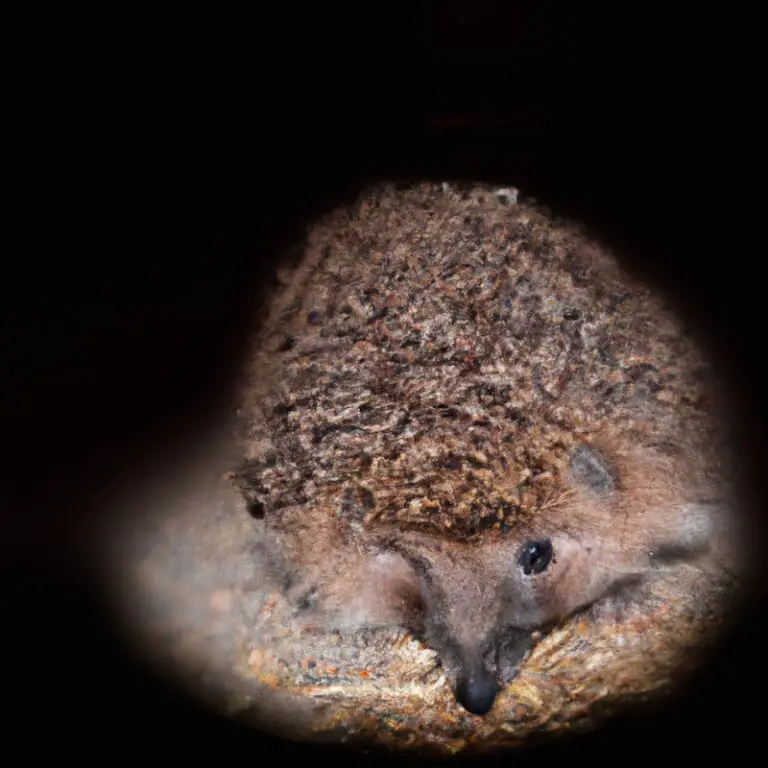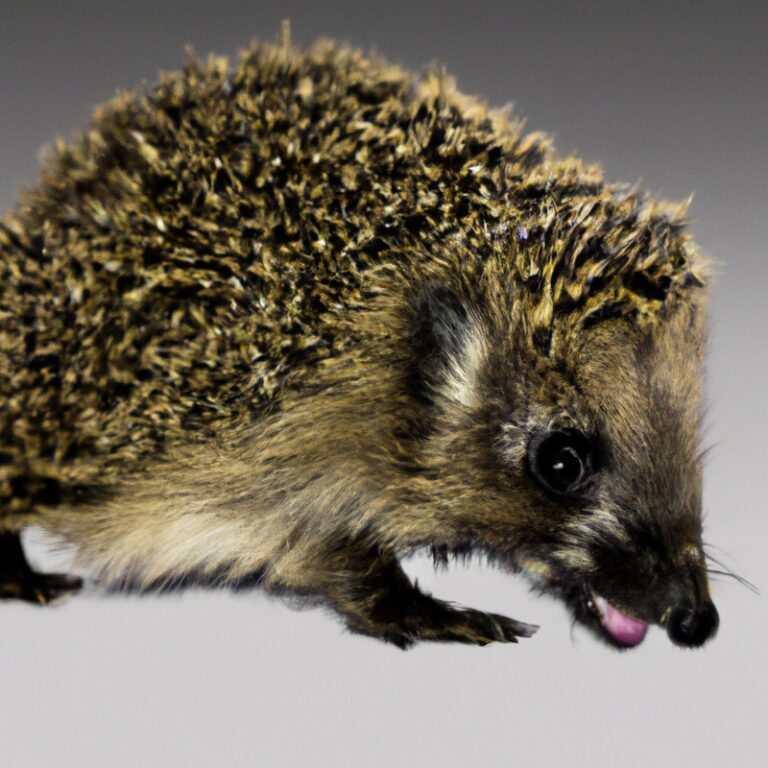How Do Hedgehogs Adapt To Urban Environments?
Key Takeaways:
- Hedgehogs have the ability to adapt to urban environments by altering their behavior and habits.
- Urban areas provide both challenges and opportunities for hedgehogs, leading to changes in their diet and activity patterns.
- Hedgehogs have shown a capacity to thrive in urban landscapes with appropriate habitat modifications and conservation efforts.
- Understanding the adaptations of hedgehogs to urban environments is crucial for their conservation and for promoting coexistence with human populations.
Are you curious about how hedgehogs manage to thrive in concrete jungles? It’s fascinating to observe how these adorable spiky creatures adapt to urban environments, isn’t it?
From shedding body weight to changing their fur color, hedgehogs have some incredible tricks up their sleeves.
But why do they adapt to city life in the first place? It’s all about finding food, escaping competition, and surviving in a changing world.
In this blog, we’ll delve into the physical and behavioral adaptations that enable hedgehogs to flourish amidst the hustle and bustle of urban settings.
Plus, we’ll explore the challenges they face and share some practical tips on how you can help conserve these hedgehog heroes in your own neighborhood. Get ready to be amazed by their resilience!
| Adaptation | Description |
| Change in diet | Hedgehogs in urban areas may have to adapt to a different diet, including scavenging for human food waste. |
| Nocturnal behavior | Hedgehogs may become more active at night to avoid human disturbances during the day. |
| Nest location | They may seek shelter in man-made structures, such as garden sheds or compost heaps. |
| Urban camouflage | Hedgehogs may develop lighter or darker fur to blend in better with their urban surroundings. |
| Reduced territory size | Due to limited green spaces, urban hedgehogs have smaller territories compared to their rural counterparts. |
| Changes in hibernation | Urban hedgehogs may change their hibernation patterns due to the artificial warmth generated by buildings. |
| Water sources | They may rely on man-made water sources, such as ponds, birdbaths, or even leaking pipes. |
Why do hedgehogs adapt to urban environments?
Hedgehogs adapt to urban environments due to the loss of their natural habitat and the availability of food sources, leading to reduced competition.
Exploring the reasons behind hedgehogs’ adaptation to urban environments
Hedgehogs adapt to urban environments for several reasons:
- Food availability: Urban areas often provide a steady supply of food for hedgehogs, such as insects, small mammals, and bird eggs.
- Shelter opportunities: Urban environments offer plenty of hiding spots, including gardens, parks, and even piles of leaves or rubbish, which hedgehogs can use for shelter.
- Reduced predators: Some natural predators of hedgehogs, like foxes and badgers, may be less common in urban areas, offering a safer environment for these animals.
- Artificial heat sources: Warmth from buildings, gardens, and compost heaps in urban areas can help hedgehogs survive in colder seasons.
- Human presence: While hedgehogs are nocturnal and largely avoid humans, the presence of people can help deter some predators, reducing the risk to hedgehogs.
These factors collectively contribute to hedgehogs’ ability to adapt and thrive in urban environments.

Loss of natural habitat
Hedgehogs’ adaptation to urban environments is largely driven by the loss of their natural habitat.
As humans expand cities and towns, they often destroy the hedgerows, woodlands, and grassland areas that hedgehogs rely on for shelter and food.
Consequently, hedgehogs are forced to seek new habitats and sources of food within urban settings.
They may den in gardens, forage for insects, and even navigate through human-made structures to survive.
This ability to adapt to urban environments is essential for their survival in the face of habitat loss.
Availability of food sources
Hedgehogs are able to adapt to urban environments because they have access to a variety of food sources.
In urban areas, hedgehogs can find an abundance of insects, such as beetles, slugs, and worms, which make up a significant part of their diet.
They can also scavenge for leftover food and find sustenance in gardens where there are fruits, vegetables, and bird feeders.
Additionally, hedgehogs have been known to consume small mammals and amphibians, further expanding their food options in urban settings.
The availability of food sources plays a crucial role in hedgehogs’ ability to survive and thrive in urban environments.
Reduced competition
In urban environments, hedgehogs may face reduced competition compared to natural habitats.
This is because there are often fewer predators and other animals competing for resources.
With less competition for food, shelter, and mates, hedgehogs can thrive and find success in these urban areas.
Additionally, humans sometimes provide supplemental food sources like pet food or bird feeders, further reducing competition for resources.
This allows hedgehogs to adapt and survive in urban environments.
Physical adaptations of hedgehogs in urban environments
Hedgehogs undergo physical changes in urban areas to adapt to their surroundings. These adaptations include smaller body size, changes in spines and fur coloration, and enhanced agility and climbing skills.
Describing the physical changes hedgehogs undergo in urban areas
Hedgehogs undergo certain physical changes when living in urban areas.
- Size: Urban hedgehogs tend to be larger than their rural counterparts, possibly due to the abundance of food sources.
- Coloration: Some urban hedgehogs have lighter fur compared to their rural counterparts, possibly as a result of pollution or changes in diet.
- Behavior: Urban hedgehogs may exhibit different behavior patterns, such as being more nocturnal to avoid human activity.
- Adaptations: Hedgehogs in urban areas may have developed shorter spines to navigate tight spaces.
These physical changes help hedgehogs thrive in urban environments by allowing them to find food, avoid predators, and adapt to their surroundings.

Smaller body size
Hedgehogs that live in urban environments often have a smaller body size compared to their rural counterparts. This adaptation allows them to navigate through the narrower spaces and crevices found in urban landscapes.
Their compact bodies also help them fit into smaller hiding spots and avoid getting stuck or trapped.
Smaller body size is an advantageous characteristic that helps hedgehogs survive and thrive in urban areas.
Changes in spines and fur coloration
Hedgehogs have cleverly adapted to urban environments through changes in their spines and fur coloration.
In cities, hedgehogs may have shorter or more flexible spines, allowing them to navigate through tight spaces and squeeze under fences or gates.
Additionally, their fur coloration may become lighter or darker to blend in with the urban surroundings, providing them with better camouflage and protection against predators.
These adaptations help hedgehogs thrive in urban areas and increase their chances of survival.
Enhanced agility and climbing skills
Hedgehogs have truly impressive agility and climbing skills. Their ability to navigate urban environments is often underestimated.
They can easily maneuver through tight spaces, squeeze under fences, and climb over obstacles using their strong claws.
Their flexible spines also allow them to squeeze through small gaps and navigate rough terrain with ease. These adaptations help hedgehogs find food, escape predators, and find suitable nesting sites in urban areas.
It’s amazing how well they can adapt to their surroundings!
Behavioral adaptations of hedgehogs in urban environments
Hedgehogs exhibit various behavioral modifications in urban environments.
Examining the behavioral modifications hedgehogs exhibit in urban settings
Hedgehogs exhibit several behavioral modifications in urban settings:
- Nocturnal behavior: Hedgehogs have adapted to nighttime activity to avoid human interference and predation.
- Nesting locations: They seek shelter in gardens, under sheds, or in compost heaps, as these mimic natural nesting sites like bushes and burrows.
- Feeding adaptations: In urban areas, hedgehogs rely on human-provided food sources, including pet food left outside, which can supplement their natural diet of insects and worms.
- Traffic avoidance: Hedgehogs learn to navigate through urban landscapes by using narrow gaps or crossing roads during quieter periods.
- Hibernation behavior: Due to warmer urban environments, hedgehogs may delay their hibernation or have shorter hibernation periods compared to their rural counterparts.
These modifications help hedgehogs survive and thrive in urban environments, ensuring their continued presence in our cities.
Nocturnal behavior
Hedgehogs are primarily nocturnal creatures, meaning that they are most active during the night. This behavior helps them avoid predators and take advantage of the darkness for their hunting activities.
During the day, hedgehogs usually hide in their nests, which are often located in sheltered areas like bushes or under piles of leaves.
At night, they venture out to search for food, which mainly consists of insects, worms, and other small invertebrates. Hedgehogs have excellent senses of hearing and smell, which aid them in navigating their surroundings and locating prey in the dark.
Their nocturnal behavior allows them to thrive in urban environments where there is less human activity at night.
Nesting in man-made structures
Hedgehogs have proven to be adaptable creatures, and one way they adapt to urban environments is by nesting in man-made structures.
They often seek out safe and sheltered areas such as garden sheds, compost heaps, and even under decking or patios.
These structures provide them with a warm and secure place to rest during the day and hibernate in winter.
Being resourceful, hedgehogs can take advantage of the nooks and crannies that man-made structures offer, helping them thrive in urban areas.
Utilizing urban gardens and yards
Utilizing urban gardens and yards is a great way for hedgehogs to adapt to urban environments. Here are some ways you can help:
- Provide shelter: Create hedgehog-friendly spaces with log piles, leaf piles, or hedgehog houses. These provide safe hiding spots for hedgehogs during the day and nesting areas.
- Offer food and water: Put out shallow dishes of fresh water and leave out cat/dog food, wet pet food, or specialist hedgehog food. Avoid giving them milk or bread.
- Create wildlife-friendly habitats: Plant native flowers, shrubs, and trees to attract insects, which are an important part of a hedgehog’s diet.
- Keep your garden safe: Check for hazards like uncovered drains or holes, and make sure they’re covered to prevent hedgehogs from getting stuck. Remove any garden netting or litter that could entangle them.
By making simple changes in your urban garden or yard, you can help hedgehogs thrive in their new environment.
Diet adaptations of hedgehogs in urban environments
Hedgehogs have undergone significant changes in their diet to adapt to urban environments.
Some factors contributing to these changes include feeding on insects and invertebrates in gardens, consuming human-provided food sources, and adapting to different types of urban waste.
Discussing the changes in hedgehogs’ diet in urban areas
In urban areas, hedgehogs’ diet can vary from their natural habitat.
They adapt to the new environment by eating a variety of food sources available.
Some changes in their diet include consuming more human-introduced food like pet food, leftovers, and even bird feed.
They may also consume more invertebrates found in gardens and parks due to the increase in green spaces.
However, it’s important to note that these dietary changes can have potential negative impacts on their health if they’re not balanced and appropriate.
Feeding on insects and invertebrates in gardens
Hedgehogs have a remarkable ability to adapt to urban environments, including when it comes to finding food. In gardens, they feed on insects and invertebrates, which play a crucial role in their diet.
By hunting for these small creatures, hedgehogs not only find sustenance but also help control garden pests naturally.
Their keen sense of smell and hearing allows them to track down their prey, making gardens a valuable food source for these prickly creatures. So, if you want to support hedgehogs in your area, creating a garden that attracts insects and invertebrates can go a long way.
Consuming human-provided food sources
Hedgehogs in urban environments often rely on consuming human-provided food sources.
This includes scavenging for food in garbage bins, compost piles, and pet food left outside.
These food sources are easily accessible and can provide hedgehogs with the necessary nutrients for survival.
However, it is important to note that relying on human-provided food can lead to imbalances in their diet and potential health issues.
It’s best to remember that hedgehogs are naturally insectivores and should primarily consume a diet of insects and other small invertebrates.
Adapting to different types of urban waste
Hedgehogs are surprisingly adaptable when it comes to different types of urban waste.
They have a diverse diet and can consume a variety of foods commonly found in urban environments.
Hedgehogs can feed on insects, small mammals, birds, amphibians, and even fruit.
They are also known to scavenge human waste, such as leftover food or discarded pet food.
Their ability to adapt their diet helps them survive in urban areas where natural food sources may be limited.
However, it is important to note that while hedgehogs are opportunistic feeders, their overall health and well-being depend on a balanced and varied diet.
Assistance from humans, such as providing supplemental food and creating hedgehog-friendly habitats, can further support their ability to adapt to urban waste.
Challenges faced by hedgehogs in urban environments
Hedgehogs in urban environments face challenges such as traffic hazards, predation by domestic pets, and a lack of suitable nesting sites.
Exploring the difficulties hedgehogs encounter in urban settings
Hedgehogs face several difficulties in urban settings. One of the main challenges is the loss of natural habitats, as urban areas often lack the lush vegetation and hiding spots that hedgehogs need for shelter and protection.
Additionally, the presence of busy roads and traffic poses a significant threat to their safety, as hedgehogs are frequently involved in accidents while crossing streets.
The use of pesticides and chemicals in urban gardens and parks can also be harmful to hedgehogs, affecting their food sources and overall health. These challenges make it harder for hedgehogs to thrive and survive in urban environments.
Traffic hazards and roadkill
Traffic hazards and roadkill are major challenges for hedgehogs in urban environments. The high volume of traffic and roads pose a significant risk to their safety and survival.
Hedgehogs often get hit by cars when attempting to cross busy roads, leading to injury or death.
Additionally, roadkill can further reduce hedgehog populations, as they are often unable to avoid or escape from moving vehicles. It is essential for urban planners and drivers to be aware of these hazards and take measures to protect hedgehogs, such as the installation of wildlife crossings and reducing speed limits in hedgehog habitats.
Predation by domestic pets
Predation by domestic pets is a significant threat to hedgehogs in urban environments.
Dogs and cats, especially those allowed to roam freely, can harm or even kill hedgehogs.
It is important for pet owners to be aware of this issue and take steps to prevent their pets from attacking hedgehogs.
Simple actions like keeping cats indoors at night and supervising dogs when they are outside can make a big difference in protecting hedgehogs from predation.
Additionally, providing wildlife-friendly spaces in gardens can create a safe habitat for hedgehogs to thrive while minimizing interactions with domestic pets.
Lack of suitable nesting sites
Hedgehogs face a lack of suitable nesting sites in urban environments. Without proper nesting sites, hedgehogs are unable to find a safe and secure place to rest, hide, and raise their young.
This can lead to increased vulnerability to predators and exposure to harsh weather conditions.
Additionally, the lack of suitable nesting sites can limit the hedgehog population growth in urban areas. Providing artificial nesting sites, such as specially designed hedgehog boxes or access to gardens with dense vegetation, can help address this challenge.
Conservation measures for urban hedgehogs
To ensure the conservation of urban hedgehogs, there are several measures that can be taken, such as creating hedgehog-friendly gardens and installing wildlife-friendly fencing.
Providing tips and techniques to support hedgehog populations in urban areas
To support hedgehog populations in urban areas, there are a few simple tips and techniques you can implement. Firstly, create a hedgehog-friendly garden by providing areas with dense foliage, piles of leaves or logs for shelter, and access to water.
Secondly, avoid using pesticides or chemicals that may harm hedgehogs or their food sources.
Thirdly, install hedgehog-friendly features like ramps or small holes in fencing to allow them to roam freely. By taking these measures, you can help protect and preserve hedgehog populations in urban environments.
Creating hedgehog-friendly gardens
Creating a hedgehog-friendly garden is easier than you might think.
Here are a few simple tips to help you make your garden a safe haven for these adorable creatures:
- Provide a variety of habitats: Hedgehogs need places to hide, sleep, and raise their young. Create different areas in your garden, such as log piles, dense shrubs, and compost heaps, to offer these habitats.
- Avoid harmful chemicals: Pesticides and slug pellets can be toxic to hedgehogs. Opt for natural pest control methods and use organic fertilizers to keep your garden hedgehog-friendly.
- Install hedgehog highways: Hedgehogs rely on interconnected green spaces to roam and find food. Cut a small hole in your fence or create an underground tunnel to allow hedgehogs to access neighboring gardens.
- Provide food and water: Leave out a shallow dish of fresh water and provide hedgehogs with a supplementary food source, such as cat or dog food (not fish-based or specialized hedgehog food.
- Avoid hazards: Remove any hazards that can harm hedgehogs, such as garden netting, ponds without escape routes, and deep holes. Check before you mow your lawn and avoid using strimmers to prevent injuring hedgehogs hiding in the vegetation.
Installing wildlife-friendly fencing
Installing wildlife-friendly fencing is an important step in protecting and supporting hedgehogs in urban environments. Here are some key considerations when installing such fencing:
- Choose the right materials: Opt for sturdy and secure fencing materials that have small mesh sizes, which prevent hedgehogs from getting trapped or stuck.
- Provide access points: Ensure that there are gaps or holes in the fencing at ground level to allow hedgehogs to pass through easily. This will enable them to move freely between gardens or green spaces.
- Avoid using barbed wire: Barbed wire can cause serious injuries to hedgehogs. Instead, use smooth and rounded fencing materials to minimize the risk of harm.
- Keep bottom edges low to the ground: Lowering the bottom edges of the fencing will prevent hedgehogs from attempting to crawl underneath and potentially getting trapped.
- Consider wildlife corridors: If possible, create connected wildlife corridors by coordinating the installation of wildlife-friendly fencing with neighboring properties. This will allow hedgehogs to move more freely across larger areas.
Remember, by installing wildlife-friendly fencing, we can contribute to creating a safe and suitable habitat for hedgehogs in our urban environments.
Educating communities about hedgehog conservation
Educating communities about hedgehog conservation is essential for their protection and survival.
Here are some effective ways to raise awareness:
- Organize workshops and events: Conduct educational sessions to inform people about hedgehogs, their habitat requirements, and the threats they face in urban environments.
- Distribute informational materials: Create brochures, pamphlets, or posters highlighting key facts and tips for hedgehog conservation. Distribute them in community centers, schools, and local businesses.
- Collaborate with schools: Work with teachers to incorporate hedgehog conservation into the curriculum. Encourage students to participate in projects or initiatives that support hedgehog preservation.
- Social media campaigns: Utilize platforms like Facebook, Instagram, and Twitter to share engaging content about hedgehog conservation. Encourage people to share their own experiences or photos using specific hashtags.
- Create community hedgehog-friendly spaces: Advocate for the creation of hedgehog-friendly areas in parks or green spaces within urban neighborhoods. Encourage individuals and local authorities to provide suitable habitats and safe passage for hedgehogs.
- Engage with local authorities: Reach out to local government officials, wildlife organizations, and environmental groups to collaborate on hedgehog conservation efforts. Lobby for the implementation of policies that protect hedgehog habitats in urban areas.
- Encourage responsible pet ownership: Educate pet owners about the importance of keeping their cats and dogs indoors at night to reduce potential conflicts with hedgehogs.
By actively educating communities about hedgehog conservation, we can instill a sense of responsibility and inspire collective action to ensure these adorable creatures thrive in urban environments.
Frequently Asked Questions (FAQs)
Common questions about hedgehogs in urban environments
Hedgehogs in urban environments can raise many questions.
Here are a few common ones:
1. Are hedgehogs affected by noise and light pollution in cities?
Yes, hedgehogs are sensitive to both noise and light pollution.
These can disrupt their natural behavior, such as foraging and finding suitable habitat.
2. Can hedgehogs find enough food in urban areas?
In some cases, yes.
Urban gardens with diverse vegetation can provide a source of insects, slugs, and earthworms, which are essential food for hedgehogs.
However, the availability of food can vary between different urban areas.
3. Are there any dangers for hedgehogs in urban environments?
Unfortunately, yes.
Common threats include road traffic, domestic pets, and the use of pesticides in gardens, which can harm hedgehogs directly or reduce their food availability.
4. Do hedgehogs hibernate differently in cities compared to rural areas?
Hedgehogs may start hibernating earlier in urban areas due to the warmer microclimate.
However, it also depends on the availability of food and shelter in the vicinity.
5. Can I create a hedgehog-friendly garden in an urban area?
Absolutely! You can provide hedgehogs with shelter by leaving areas of your garden wild, creating log piles, or even installing a hedgehog house.
Avoid using pesticides and try to create a welcoming habitat with native plants.
Remember, respecting hedgehogs’ natural behavior and providing them with suitable habitat can greatly contribute to their survival in urban environments.
Can hedgehogs live in cities?
Hedgehogs can indeed live in cities! They are very adaptable creatures and have successfully made urban environments their home. They can find food in gardens, parks, and even garbage bins.
However, it’s important to create a hedgehog-friendly environment by avoiding the use of pesticides and providing them with shelter, such as log piles or hedgehog houses.
By being mindful of their needs, we can help hedgehogs thrive in our urban spaces.
Are hedgehogs dangerous to humans?
Hedgehogs are generally not dangerous to humans. They are small and shy animals that prefer to avoid confrontation.
However, if they feel threatened or cornered, they may curl up into a ball and use their spines for defense.
It is important to approach hedgehogs with caution and avoid picking them up without proper knowledge or experience. If you encounter a hedgehog, it is best to observe them from a distance and let them go about their business.
How can I help hedgehogs in my area?
To start, create a hedgehog-friendly garden by providing food and water, while avoiding harmful chemicals.
Make sure your garden has hedgehog-sized holes in fences to allow them to roam freely.
Creating a hedgehog house or leaving piles of leaves and logs can also provide them with shelter.
Lastly, raise awareness about hedgehog conservation and support local organizations working towards their protection.
By taking these simple steps, you can make a big difference in helping hedgehogs thrive in your area.
Final Verdict
Hedgehogs have shown remarkable adaptability in urban environments due to several factors. The loss of natural habitat has forced them to seek refuge in city settings.
They have also capitalized on the abundance of food sources and reduced competition.
Physically, hedgehogs have undergone changes such as smaller body size, altered spines, and fur coloration, and enhanced agility. Behaviorally, they have become nocturnal, nested in man-made structures, and utilized urban gardens.
However, hedgehogs still face challenges such as traffic hazards, predation, and lack of suitable nesting sites.
To support their conservation, creating hedgehog-friendly gardens, installing wildlife-friendly fencing, and educating communities about their importance are crucial. By implementing these measures, we can help hedgehogs thrive in our urban areas.







